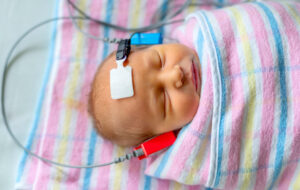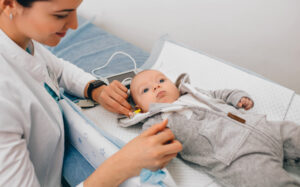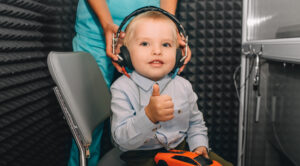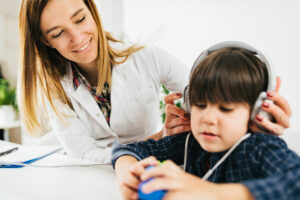Pediatric Hearing Tests in Oak Lawn, IL
As part of your child’s health and wellbeing, it is critical to have hearing tests done regularly. It can be difficult, as a parent, to detect whether your child is experiencing hearing loss. As such, children should undergo hearing tests as soon as possible and at several points throughout their childhood.
The Centers for Disease Control and Prevention (CDC) recommends that you start taking your children to get hearing tests done as early as one month of age. On that note, your child could be experiencing hearing loss at a very early point in their life. In order to treat this condition, your child must be taken to see a pediatrician right away. Our clinic offers hearing tests for children of all ages.
If your child is showing symptoms of hearing loss, you can come to Minis Pediatric Walk-In Clinic to receive the specialized care and treatment they need.
Does My Child Need a Hearing Test? — Signs to Be Aware Of
Some common signs that say your child needs a hearing test include:
- Not responding to their name
- Failure to notice loud background noise
- Little to no speech or speech is delayed or unclear
- The need to have loud things within their vicinity
- Needs constant repeating of what has been said to them
What Our Hearing Tests Screen For
When you take your little one for a hearing test at our clinic, we check for their response to tones or words that are delivered at various pitches, volumes, and noise environments. If your child shows signs, we will also test for the type of hearing loss they are experiencing and the severity of the condition. Some types of hearing loss include sensorineural hearing loss, which is caused by damage to the nerve or cochlea, and conductive hearing loss, caused by damage to the eardrum or the ossicle bones.
Types of Hearing Tests for Newborns, Babies, Toddlers, and Older Children
Because there are several kinds of hearing loss, there are several kinds of hearing tests that can be conducted by a pediatrician. Many of these tests vary by age. We break down the hearing tests that are done throughout your child’s youth.
Newborns

One of the tests that newborns take is called evoked otoacoustic emissions (EOAE), which utilizes a plug that is placed into the ear of the infant. A microphone in the plug collects otoacoustic responses to sounds.
Another hearing test done during the newborn phase of your child’s life is the auditory brainstem response (ABR). This test uses wires (electrodes) that are attached to the baby’s scalp. While the baby is asleep, earphones are placed in their ears and make clicking sounds to measure the brain’s activity in responding to the sounds.
Babies

The EOAR and ABR tests can also be conducted later on in infancy, past the newborn phase. In addition to the tests, behavioral audiometry is a test that records a child’s response to the soft sounds presented to them.
Your child’s responses to these sounds are plotted on an audiogram to measure degrees of hearing at different tones. This test helps indicate whether your child can hear soft sounds at various levels, especially when being spoken to.
Toddlers

Toddlers are tested through play audiometry, which uses behavioral conditioning to get children to respond to sounds. This test is designed for children between 2 to 5 years of age.
Visual reinforcement audiometry (VRA) is another test that can be done during this point in your child’s life. This test uses a machine called an audiometer to analyze how a child responds to different sound levels. The test includes headphones and a feedback button to which a patient can respond to the sounds they are hearing.
Older Children

Pure tone audiometry is introduced to children past the toddler phase. This test takes a behavioral approach to measure hearing sensitivity. A child is to wear a pair of earphones attached to an audiometer. Pure tones of a specific frequency and volume are delivered to one ear at a time. A child will be asked to signal when they hear a sound.
Another test done in older children is the tympanometry test, also known as the impedance audiometry test. This test is designed to look at how well a child’s eardrum moves. An audiologist will place a small probe with a small device attached to it into each other. This test provides useful information about the presence of fluid in the middle ear, mobility of the middle ear system, and ear canal volume.
We’re Here for Your Child — Contact Minis Pediatric Walk-In Clinic!
Every aspect of your child’s health is equally important, which is why your little one should undergo hearing tests as regularly as any other tests. If you have any concerns about your child’s hearing or would like to have their hearing checked, you can make an appointment with us. Contact us today!